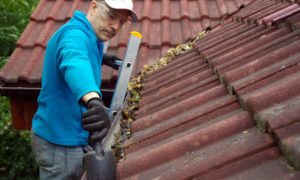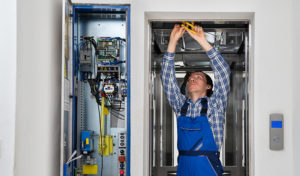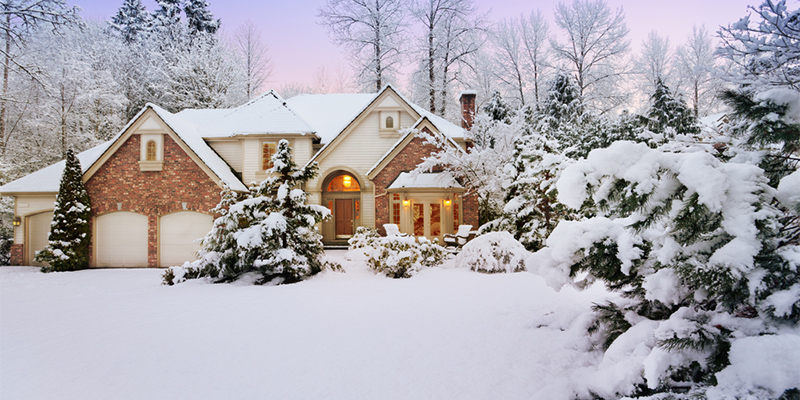The winter season is a much-anticipated time of the year for a lot of people. It is when the holidays come along and bring families together. But, for landlords, a top priority should be winter maintenance for rental property.
What to Do for Winter Maintenance for Rental Property
Rental property maintenance is well within the scope of a landlord’s duties and responsibilities. Landlords have an obligation to keep rental homes in good, livable condition. This includes preparing the home for the cold months.
Rental home winter maintenance has plenty of benefits. In addition to keeping tenants warm throughout the cold season, it minimizes the risk of damage to the property. Winter maintenance can help landlords save a fortune on repairs down the road.
Unfortunately, not all landlords know how to perform proper winter maintenance for rental property. To help out, here are the top tips landlords can use this winter season.
1. Prune Trees and Trim Shrubs
Wintertime brings with it many joys, but it can also come with strong winds, snow, and ice. All of these things can snap branches off trees, possibly damaging nearby vehicles, sidewalks, roofs, and windows. Not only do overgrown tree limbs pose a threat to safety, but they can also deal thousands of dollars worth of damages. A good way to prevent this, though, is to prune the trees right before winter. Cut down low-hanging, dead, or diseased branches.
It is also the perfect time to have the shrubs trimmed down and the grass mowed. When landlords allow vegetation to grow too much, it can become unsightly. This can negatively affect the property’s curb appeal. Mowing the lawn and raking dead leaves can also contribute to yard health, as they prevent the growth of mold and other bacteria.
 2. Clean the Gutters
2. Clean the Gutters
A home’s gutters will see a lot of use during the winter season. As such, it only makes sense to have them cleaned. Landlords should clear leaves and other debris from the gutters. This way, when snow and ice melt, the water has somewhere to go.
It is also a good idea to check the strength of the gutters. Ice and snow buildup can weigh gutters down and cause them to detach. This will create an even bigger problem for landlords in the future.
3. Disconnect Outdoor Hoses and Spigots
When landlords conduct rental property maintenance for winter, they should never leave out outdoor hookups. Remember to drain all the liquid from hoses and detach the connections before storing them for the winter season. Failing to do this can cause spigots and garden hoses to freeze. Before long, they will become damaged and require replacing. Additionally, landlords should shut down the outdoor water supply to prevent pipes from freezing as well.
4. Clean the Chimney
A fireplace can add to the appeal of a rental home. But, it also means having one more item on the winterization checklist for landlords. To prepare chimneys for winter, landlords must have them checked and cleaned thoroughly. This can significantly reduce the risk of chimney fires as well as poisoning from carbon monoxide. After all, wintertime is when chimneys get the most action.
5. Inspect the Roof
Landlords should perform roof inspections as part of winter maintenance, too. Check for broken or cracked shingles. These are the ones that a storm can knock loose and send falling down below. Roofs with lots of damaged shingles also invite leaks and, by extension, water damage.
6. Prepare for Snow and Ice
In many states, a big part of winter maintenance for rental properties is snow and ice removal. While some landlords choose to take a DIY approach, it is infinitely better to hire a snow removal service. Services can run out fast, though, especially around the winter season. As such, landlords should secure a contract early on to avoid scheduling conflicts and price increases.
7. Winterize the Pipes
Most states experience a drop in temperature during the winter season. Thus, there is a higher chance that indoor pipes could freeze over and burst. A good way to prevent this from happening is to install pipe insulation, though that will usually require professional help.
For outdoor pipes, make sure to bleed the lines and drain the pipes fully. Then, shut off the water to the outside. Pipe winterization is an essential part of winter maintenance for rental property. Performing this step can save landlords a huge amount of money on repairs.
8. Inspect for Cracks and Gaps
Rental property winterization is not limited to pipes, chimneys, and gutters. Landlords should also make it a point to check the property for any gaps and cracks. These openings can cause cold air and moisture to leak into the home, forcing the HVAC system to work twice as hard. This is a waste of both money and energy.
When landlords find any gaps or cracks, it is important to seal them at once. Landlords should also install seals around doors and windows. If the property has an attic, don’t forget to have it checked for cracks as well.
9. Check the Exterior Foundation
It is easy to neglect the property’s foundation and deck when snow and fallen leaves start to cover them. Still, this does not make it okay. Landlords must also inspect the foundation and deck for any holes or openings. If there are any, seal them properly.
Pests such as rodents typically use these holes as a way to find shelter and escape the cold. Rodents are not only unsightly, but they can also damage the property and bring disease with them.
10. Service the HVAC System
Tenants will likely use the heating system more during the cold months. As such, it is important to make sure the HVAC system won’t break down mid-winter. Landlords should hire a professional to service the HVAC system as well as the water heater in time for the winter season.
11. Ensure Detectors Are Functional
When it comes to winter maintenance for rental property, many forget to have detectors checked out. Tenant safety is a top priority, so landlords must make sure all smoke and carbon monoxide detectors are functioning as intended. In addition to keeping tenants safe, these alarms can protect the property from severe damage as well.
Additional Tips for Apartment Winter Maintenance
While the above tips can apply to both apartments and single-family homes, there are some aspects of winter maintenance that are exclusive to apartment buildings. For landlords who manage apartments, here are some additional tips to keep in mind:
 12. Service Elevators
12. Service Elevators
For apartment buildings with elevators, it is imperative to have them serviced on a regular. Elevators can be death traps when maintained poorly. As such, landlords must make it a part of their winter maintenance routine to have elevators inspected and, if necessary, repaired.
13. Check Common Amenities
Some apartment buildings have communal amenities such as pools and gyms. These areas will also require winter maintenance. Outdoor pools, for one, may freeze over during the wintertime, so they will need covers. Some indoor pools, though, are heated and can remain functional throughout winter.
Common areas should also have all the safety bells and whistles, including smoke and carbon monoxide detectors. Landlords should see to it that these alarms function as they should. If there are any common areas missing detectors, now is the time to install them.
14. Keep Stairways Dry
Apartment buildings tend to have multiple floors. In addition to elevators, tenants also use the stairs to get to where they need to be. But, wet stairways can cause tenants and guests to slip and injure themselves, creating a liability nightmare for landlords.
As part of winter maintenance for rental property, landlords should make sure to keep stairways dry and clean. It is a good idea to place doormats at every entrance so that tenants and guests can dry off their shoes before entering the premises.
15. Maintain Empty Units
Empty units in an apartment building also need proper care and winter maintenance. Landlords should ensure the heat is working well in these units. Any gaps, cracks, and other openings should also be sealed. It is also a smart move to leave bathroom and kitchen cabinets open so that the heat can circulate properly, preventing the pipes from freezing over and bursting.
Tenant Snow Removal Responsibility
Snow removal is a common winter maintenance task in many states. Though, some landlords and tenants get into disputes over who should bear this responsibility. Is the tenant responsible for removing snow? Or should landlords do it?
The answer is, it depends. The lease agreement should state, in clear terms, who is responsible for snow clearing. Oftentimes, tenants who rent single-family homes must remove the snow themselves, whereas landlords shoulder the responsibility for multi-family dwellings. Make sure to check the snow removal clause in the rental agreement for guidance.
A Necessary Aspect of Property Management
Winter maintenance for rental property ensures that tenants feel comfortable in their living environment. Not only that, but landlords can save tons of money in future repairs and replacements, too.
Are you tired of managing your own rental property? Find a property management company to do it for you. Use Rental Choice’s online directory to get a head start on your search today.
RELATED ARTICLES:
- Pest Control In Rental Properties: Who Is Responsible?
- The Ins And Outs Of Rental Property Maintenance and Repairs
- Is Landlord Responsible For Fallen Tree?




 Company
Company